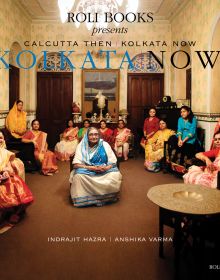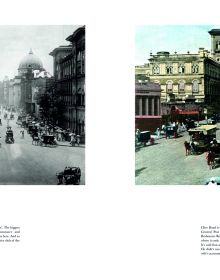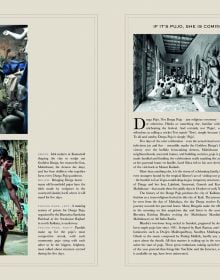Calcutta Then Kolkata Now
- Calcutta Then: Calcutta is where it all began. The city symbolised India's transformation from medievalism to modernity
Calcutta Then: Calcutta is where it all began. The city symbolized India’s transformation from medievalism to modernity. The British created the framework. The prophets and pioneers who operated within it were Indian. Raja Rammohan Roy linked past and present. After him came the poets, patriots and politicians. They made banian, boxwallah, bhadralok and biplab – trader, company executive, gentleman and revolutionary – the four props of the new metropolitan culture that inspired Gopal Krishna Gokhale’s memorable comment, “What Bengal thinks today, India thinks tomorrow”. Much water has flown down the Hooghly since then. But the lifestyle that evolved in the city is still the hallmark of success throughout the country. Calcutta was modern India’s first capital, from 1772 to 1931. Announcing the shift to Delhi during his visit to Calcutta, King George V declared, “Calcutta must always remain the premier city of India. Its population, its importance as a commercial centre and great emporium of trade, its splendid historical traditions, all continue to invest Calcutta with a unique character which should preserve to it a pre-eminent position”. Kolkata Now: Love it, endure it, call it what you will, Kolkata is Life as ‘kháos’ as no other city is. Once a bubble, holding out the rest of Bengal – and, indeed, India – it is today a city that contains a multitude of cities: Kolkata, Calcutta, Kalkatta . Its cosmopolitanism and liberal values are clichés because they are true, even as they stand witness to its past insurrections and present anomalies as much as to its genius to enjoy life – through pujo, mishti, Culture (always with a capital ‘C’), neighbourhood addas, fajlami (innocent naughtiness), football and fish. For visitors and those who once left the city, it can be a walk through time, a ride on a tram, or a constant return to the scene of old happy crimes on Park Street, in its colonial-style clubs, or its sprawling mansions that exist cheek-by-jowl with malls and multiplexes. For the Kolkatan, Kolkata Now keeps its own beat and time, where everyday struggles and quibbles unerringly give way to the ability to live Life – both peripatetic and sedentary, bustling and empty, noisy and gone-quiet, Technicolor and Noir – in the 21st-century mahanagar as it moves, always pretending to succumb, to the future.
- Publisher
- Roli Books
- ISBN
- 9788193750193
- Published
- 9th Oct 2019
- Binding
- Hardback
- Territory
- USA & Canada
- Size
- 11.26 in x 11.26 in
- Pages
- 256 Pages
- Illustrations
- 293 color
Our Catalogs
Browse Our Books
Please log-in or create an account to see your recent items.





